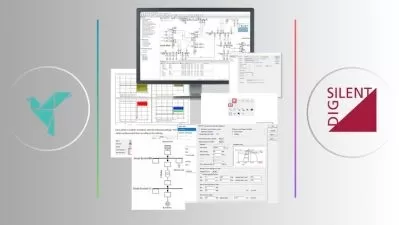DTRI-EE0902: Microwave Network Theory and Passive Devices
Kiran Marathe
2:36:15
Description
Master basics of microwave network theory and learn about passive devices to excel in your academic tests!
What You'll Learn?
- Understanding basics of microwave networks and passive devices
- Strengthen the concepts to pass university exams
- Ability to solve engineering problems in these areas
- Confidence to pursue career in Microwave Engineering
Who is this for?
More details
DescriptionMicrowave engineering is not a subject that students like. But that does not mean it is a boring topic. In this course IÂ have made a sincere attempt to make it interesting for you to understand the concepts rather than just memorize the content.
If you are a student, this course should help you get high grades in your tests.
If you are professional microwave/ RFÂ engineer this course will help refresh your basics.
Please do not hesitate to provide your honest feedback by highlighting corrections, any additional topics you want me to cover or just anything. IÂ will for sure take it in right spirit! Thank you.
This course covers following topics:
Introduction to multi-port microwave network
Z-matrix/ impedance matrix
Y-matrix/ admittance matrix
S-matrix/ scattering parameters
ABCDÂ parameters/ transmission matrix
Reciprocal networks
Various passive devices (cables, connectors, attenuators, tees)
Analyzing microwave devices or a system using low-frequency methods is complicated and there are better ways to analyze based on what is expected from the analysis. In this course various methods using Z,Y,S and ABCD parameters is explained which can be applied to a real system.
3 important properties of microwave devices - reciprocity, matched and lossless are described to understand the significance.
Microwave systems use numerous passive devices. In this course we explain what is a passive device and various such passive devices like coaxial cable, SMA, BNC, N-type connectors are explained.
Microwave attenuators and types, phase shifters and waveguide tees (E-field, H-field and magic tee) basics are explained with mathematical derivations.
Who this course is for:
- Bachelor and Master degree students in the field on Wireless Communication, Communication Networks, Digital Communication and RF/Microwave Engineering
- Working professionals intending to refresh knowledge in Microwave Engineering
- Hobbyists pursuing projects in RF and Microwave Engineering
- To anyone who thinks Microwave Engineering is complex!
Microwave engineering is not a subject that students like. But that does not mean it is a boring topic. In this course IÂ have made a sincere attempt to make it interesting for you to understand the concepts rather than just memorize the content.
If you are a student, this course should help you get high grades in your tests.
If you are professional microwave/ RFÂ engineer this course will help refresh your basics.
Please do not hesitate to provide your honest feedback by highlighting corrections, any additional topics you want me to cover or just anything. IÂ will for sure take it in right spirit! Thank you.
This course covers following topics:
Introduction to multi-port microwave network
Z-matrix/ impedance matrix
Y-matrix/ admittance matrix
S-matrix/ scattering parameters
ABCDÂ parameters/ transmission matrix
Reciprocal networks
Various passive devices (cables, connectors, attenuators, tees)
Analyzing microwave devices or a system using low-frequency methods is complicated and there are better ways to analyze based on what is expected from the analysis. In this course various methods using Z,Y,S and ABCD parameters is explained which can be applied to a real system.
3 important properties of microwave devices - reciprocity, matched and lossless are described to understand the significance.
Microwave systems use numerous passive devices. In this course we explain what is a passive device and various such passive devices like coaxial cable, SMA, BNC, N-type connectors are explained.
Microwave attenuators and types, phase shifters and waveguide tees (E-field, H-field and magic tee) basics are explained with mathematical derivations.
Who this course is for:
- Bachelor and Master degree students in the field on Wireless Communication, Communication Networks, Digital Communication and RF/Microwave Engineering
- Working professionals intending to refresh knowledge in Microwave Engineering
- Hobbyists pursuing projects in RF and Microwave Engineering
- To anyone who thinks Microwave Engineering is complex!
User Reviews
Rating
Kiran Marathe
Instructor's Courses
Udemy
View courses Udemy- language english
- Training sessions 30
- duration 2:36:15
- Release Date 2023/03/07











